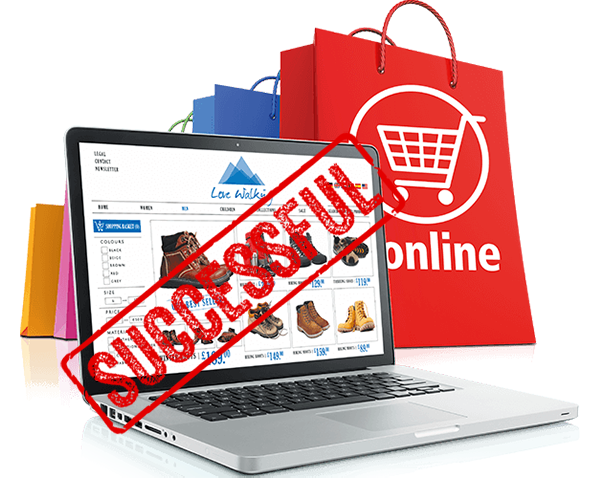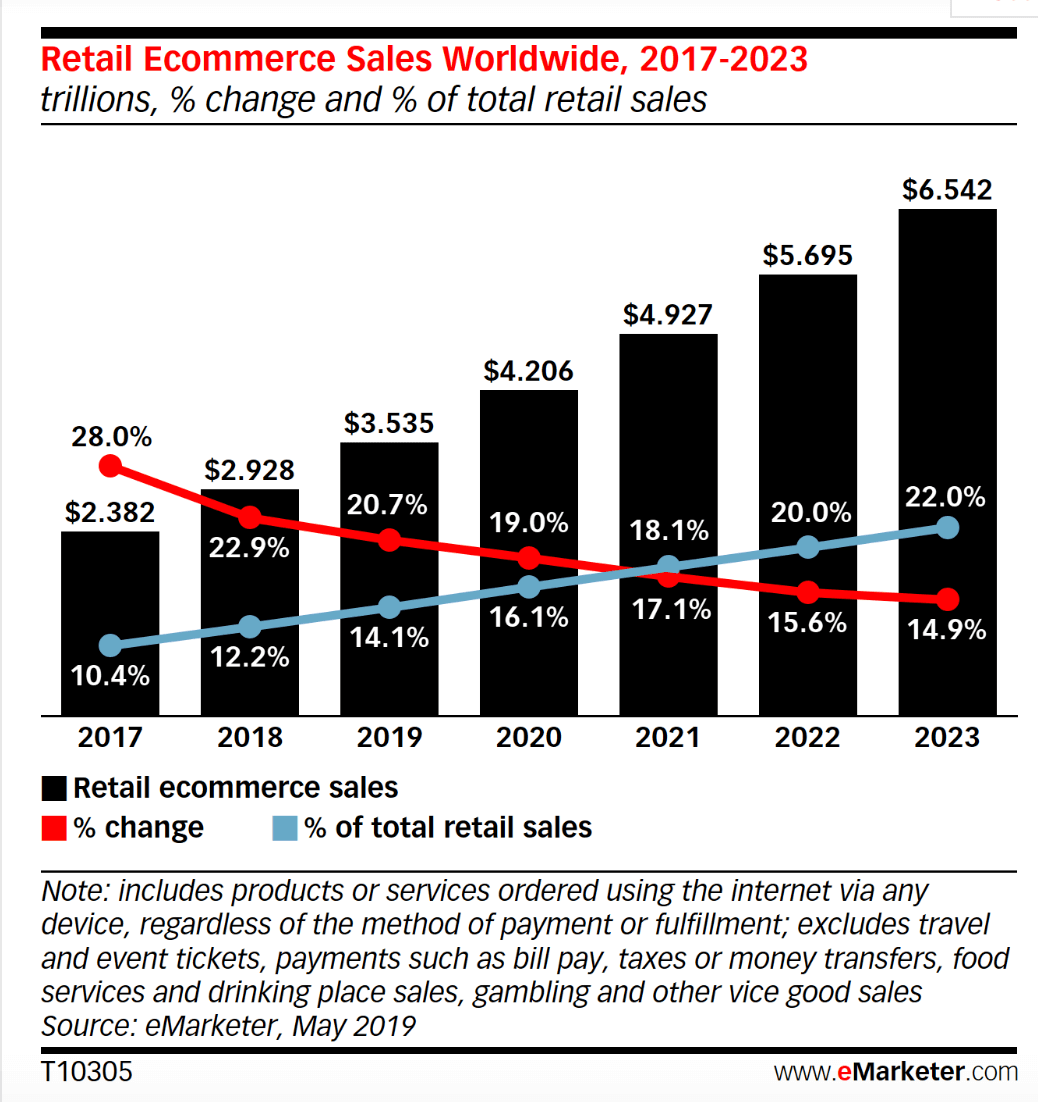How to Build a Successful E-commerce Business

In the digital age, the e-commerce landscape is akin to a bustling marketplace, teeming with opportunities and challenges. Imagine walking into a vast, virtual bazaar where every stall is a potential competitor, and every customer is just a click away. The question is, how do you stand out and build a thriving online store? Let's dive into the strategies and insights that can transform your e-commerce venture into a success story.
Understanding the E-commerce Landscape
Before diving into the specifics of building a successful e-commerce business, it's crucial to understand the current landscape. According to Statista, global e-commerce sales are projected to reach $7.4 trillion by 2025. This staggering figure underscores the immense potential for growth and success in the online retail space.
Identifying Your Niche
The first step in building a successful e-commerce business is identifying your niche. What unique products or services can you offer that set you apart from the competition? Think about your passions, expertise, and market trends. For instance, if you have a deep love for sustainable living, you might consider selling eco-friendly products.
Conducting Market Research
Once you've identified your niche, it's time to conduct thorough market research. Understand your target audience, their needs, preferences, and pain points. Tools like Google Trends, SEMrush, and social media platforms can provide valuable insights into consumer behavior and market trends.
Building Your Retail Website
Your retail website is the cornerstone of your e-commerce business. It's the digital storefront where customers will interact with your brand. Here are some key elements to consider when building your online store:
User-Friendly Design
A user-friendly design is paramount. Your website should be easy to navigate, visually appealing, and mobile-friendly. According to a study by Google, 53% of mobile users will leave a website if it takes longer than three seconds to load. Ensure your site is optimized for speed and functionality.
High-Quality Product Images and Descriptions
High-quality product images and detailed descriptions can significantly enhance the shopping experience. Use professional photography and write compelling copy that highlights the benefits and features of your products.
Secure and Seamless Checkout Process
A secure and seamless checkout process is essential for building trust and increasing sales. Offer multiple payment options and ensure your site is secure with SSL certificates. Tools like Stripe and PayPal can help streamline the payment process.
Implementing Effective Business Strategies
Building a successful e-commerce business requires more than just a well-designed website. You need to implement effective business strategies to drive growth and sustainability.
Search Engine Optimization (SEO)
SEO is a critical component of any e-commerce strategy. Optimizing your website for search engines can help increase your visibility and attract organic traffic. Use relevant keywords, create high-quality content, and build backlinks to improve your search engine rankings.
Content Marketing
Content marketing is a powerful tool for engaging your audience and building brand loyalty. Create valuable content such as blog posts, videos, and social media updates that resonate with your target audience. For example, if you sell fitness equipment, you could create workout videos and share them on your blog and social media channels.
Social Media Marketing
Social media platforms like Facebook, Instagram, and Twitter offer a wealth of opportunities for promoting your e-commerce business. Engage with your audience, share user-generated content, and run targeted ads to reach a broader audience.
Increasing Sales and Customer Loyalty
Increasing sales and fostering customer loyalty are key to long-term success in the e-commerce world. Here are some strategies to help you achieve these goals:
Personalized Customer Experience
Personalization can significantly enhance the customer experience. Use data analytics to understand your customers' preferences and tailor your marketing efforts accordingly. For instance, you could send personalized emails with product recommendations based on a customer's browsing history.
Loyalty Programs
Loyalty programs can incentivize repeat purchases and build customer loyalty. Offer rewards, discounts, and exclusive perks to customers who make frequent purchases or refer friends to your store.
Excellent Customer Service
Excellent customer service is the backbone of any successful e-commerce business. Respond promptly to customer inquiries, resolve issues efficiently, and go the extra mile to ensure customer satisfaction. Tools like live chat and customer service software can help streamline your support efforts.

Measuring and Analyzing Performance
To build a successful e-commerce business, you need to continuously measure and analyze your performance. Use analytics tools like Google Analytics to track key metrics such as website traffic, conversion rates, and customer lifetime value.
A/B Testing
A/B testing is a powerful technique for optimizing your website and marketing campaigns. Test different versions of your website, product pages, and ads to see which performs better. Use the insights gained to make data-driven decisions and improve your overall performance.
Customer Feedback
Customer feedback is invaluable for understanding your strengths and areas for improvement. Collect feedback through surveys, reviews, and social media to gain insights into your customers' experiences and preferences.
Conclusion
Building a successful e-commerce business is a journey filled with opportunities and challenges. By identifying your niche, conducting thorough market research, building a user-friendly retail website, implementing effective business strategies, and focusing on customer loyalty, you can set yourself up for success.
Remember, the e-commerce landscape is constantly evolving. Stay informed about the latest trends and technologies, and be willing to adapt and innovate. With dedication, hard work, and the right strategies, you can turn your e-commerce venture into a thriving business.

FAQs
What are the key elements of a successful e-commerce business?
- The key elements include identifying your niche, conducting market research, building a user-friendly website, implementing effective business strategies, and focusing on customer loyalty.
How can I increase sales in my e-commerce business?
- You can increase sales by offering personalized customer experiences, implementing loyalty programs, providing excellent customer service, and using data analytics to optimize your marketing efforts.
What is the importance of SEO in e-commerce?
- SEO is crucial for increasing your website's visibility and attracting organic traffic. By optimizing your site for search engines, you can improve your search engine rankings and reach a broader audience.
How can I measure the performance of my e-commerce business?
- You can measure performance using analytics tools like Google Analytics to track key metrics such as website traffic, conversion rates, and customer lifetime value. Additionally, A/B testing and customer feedback can provide valuable insights.
What are some effective business strategies for e-commerce growth?
- Effective business strategies include SEO, content marketing, social media marketing, personalized customer experiences, loyalty programs, and excellent customer service. These strategies can help drive growth and sustainability in your e-commerce business.
Belum ada Komentar untuk "How to Build a Successful E-commerce Business"
Posting Komentar